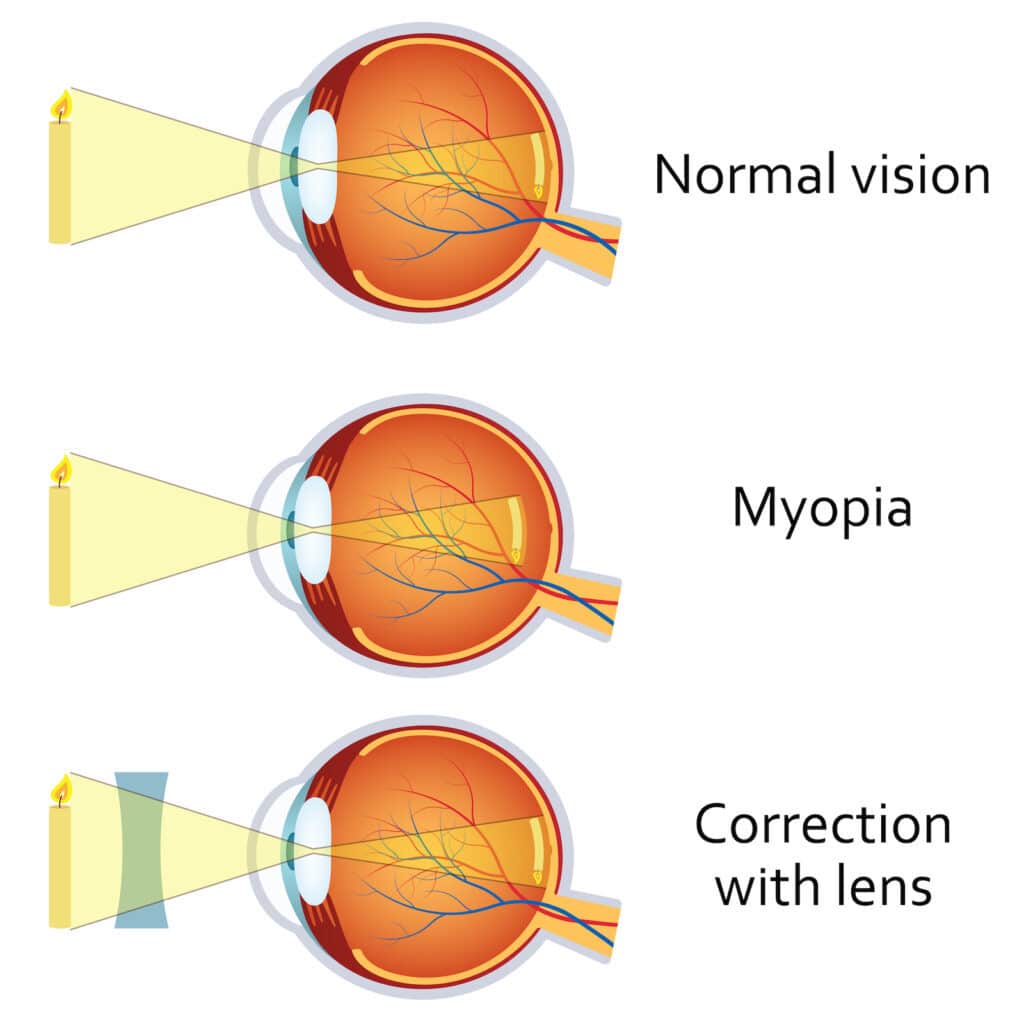Myopia (Nearsightedness)

One of the most common vision problems faced by millions of people is the inability to see objects clearly at a distance. While reading or focusing on objects up close may not be an issue, things perceived at a distance can remain blurry and require significant squinting or eye strain. Medically speaking, this condition is called myopia – more commonly, trouble seeing objects far away is better known as nearsightedness. Nearsightedness is caused by an irregularity in the structure of your eye. When the eyeball is too long or the cornea too curved, it can result in problems rendering distant objects into focus. In non-myopic individuals, light passes directly to the retina and clear images are projected. Those who suffer from nearsightedness have light passing in front of their retina rather than onto it. This refractive error results in an inability to see clearly at a distance.
Symptoms of myopia can arise as early as eight years old, and conditions typically worsen during teenage years and puberty. The most prevalent symptom is blurred vision, but this can additionally cause:
- Eye fatigue
- Substantial eye strain
- Headaches
- Trouble seeing exit signs, traffic signals, chalkboards, etc.
During adulthood, myopia generally stabilizes, and there is no significant change in conditions; however, substantial reliance on temporary solutions like glasses and contact lenses is likely. Many patients wishing to more effectively and comprehensively treat their nearsightedness often turn to vision correction procedures that offset the symptoms of myopia.
Treatments for Myopia
Our ophthalmologists offer a wide range of treatments for nearsightedness to accommodate the unique needs of our variety of patients. They include:
LASIK
Dr. Thomas E. Clinch and Dr. Paul C. Kang are well-trusted among both patients and eye surgeons alike to deliver the most advanced LASIK treatment available. Our cutting-edge Wavefront Optimized® LASIK technology can reshape the cornea with unparalleled precision and substantially decrease, if not eradicate, your reliance on corrective lenses.
PRK
Alternatively, the surgeons at Eye Doctors of Washington also offer nearsighted individuals PRK, LASIK’s predecessor. PRK can correct refractive errors, such as myopia, with state-of-the-art precision and control without the need for creating a corneal flap. This may be an ideal option for individuals whose lifestyles necessitate active physical contact, as damaging the corneal flap in eye injuries after surgery can lead to infections.
Refractive Lens Exchange (RLE)
The Refractive Lens Exchange (RLE) procedure can address nearsightedness as well as eliminate any future possibility of developing cataracts. This procedure is very effective in treating all types of refractive errors and serves as a useful alternative to treatments involving laser technology. The eye’s natural lens is replaced with an artificial lens that can correct many common vision problems associated with lack of clarity.
We strive to offer a scope of vision correction services to ensure each patient has an optimal experience tailored to their unique vision and lifestyle.
To myopia and the various procedures that can help correct your vision, don’t hesitate to contact our experienced eye surgeons today.
